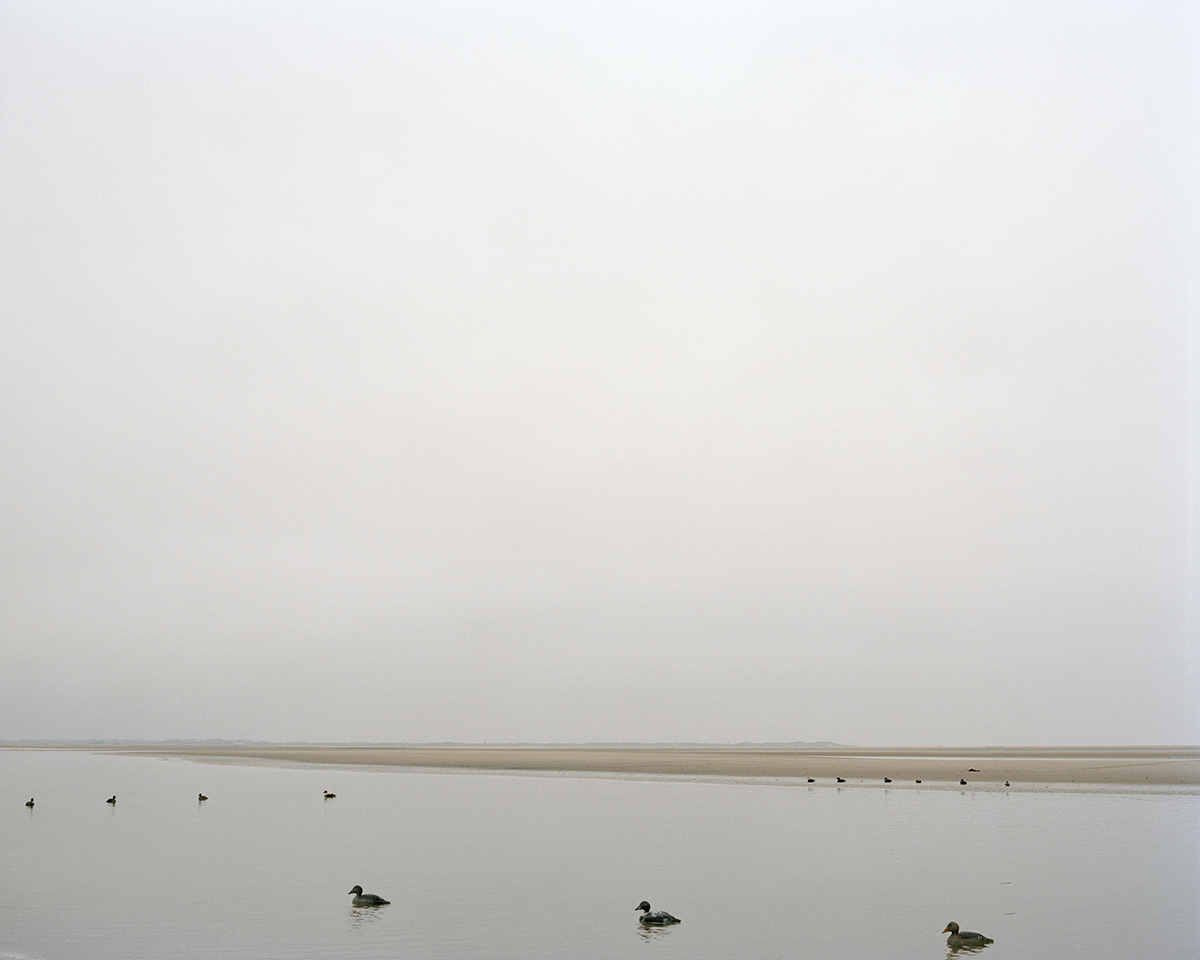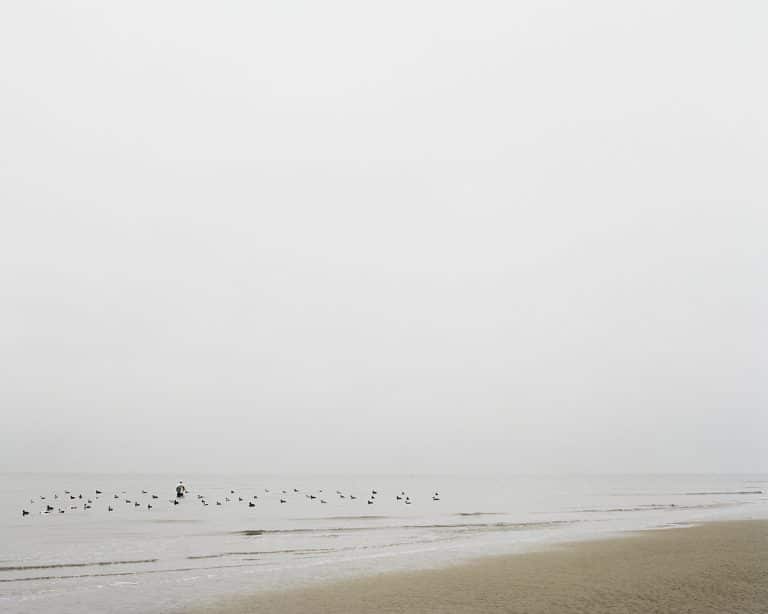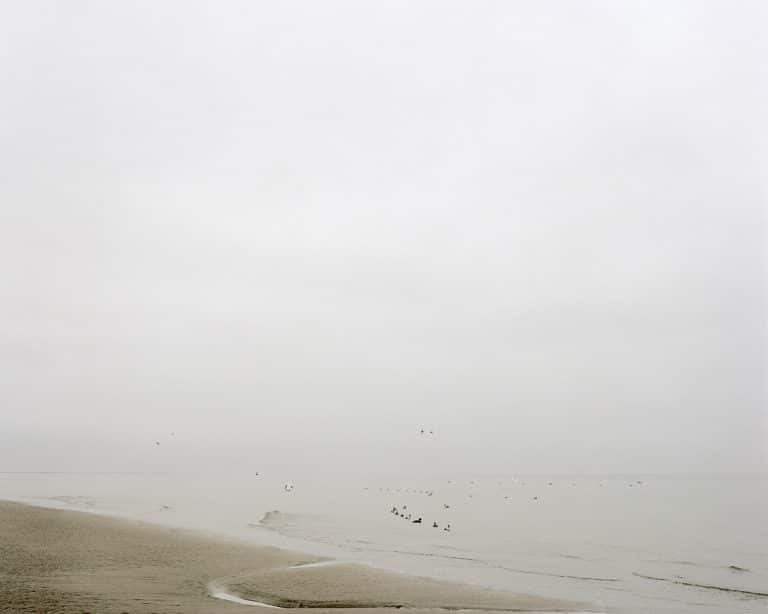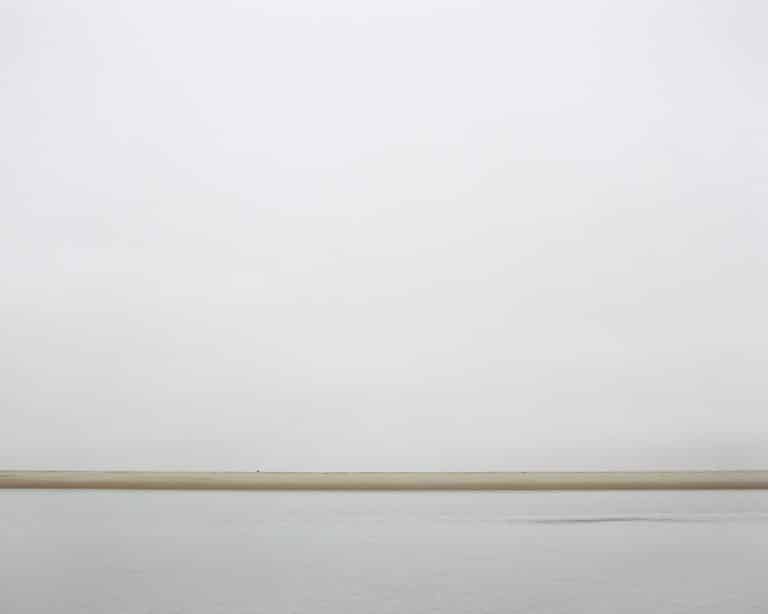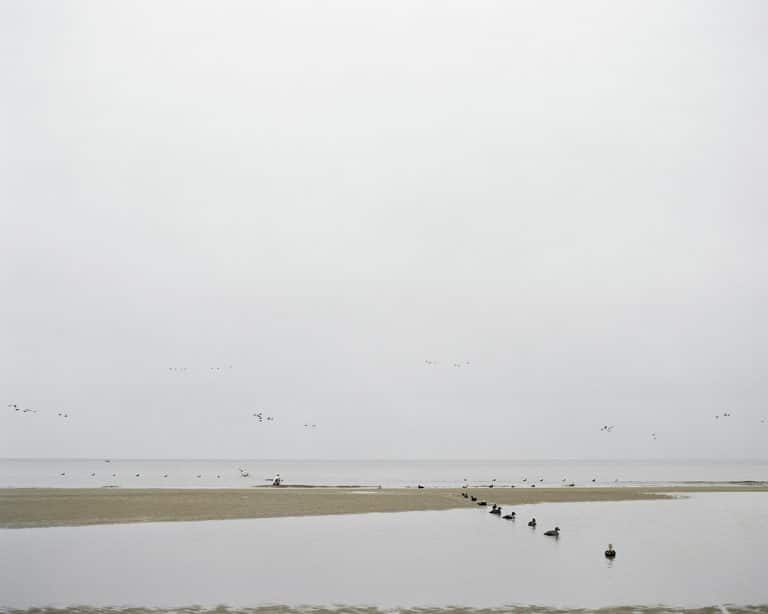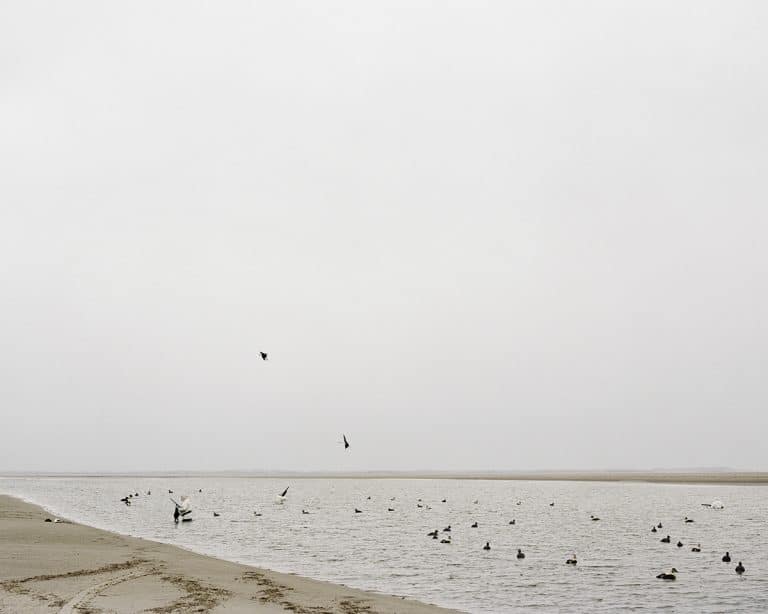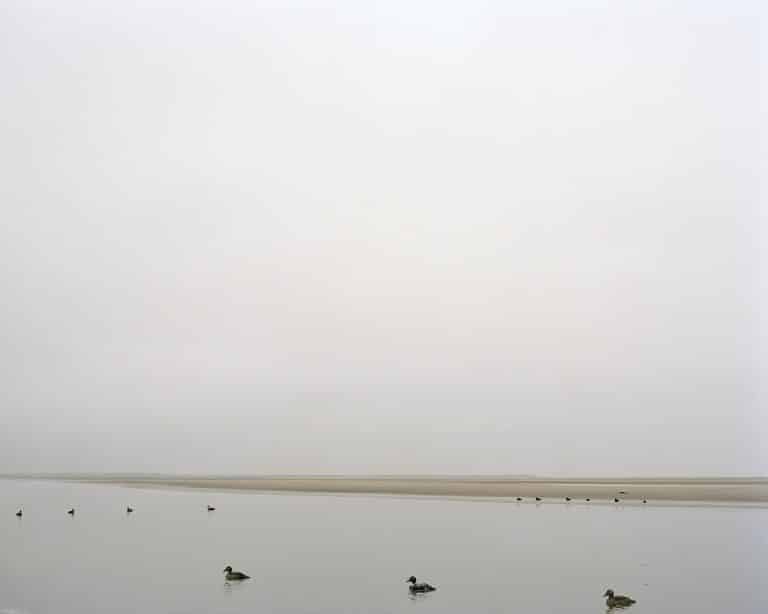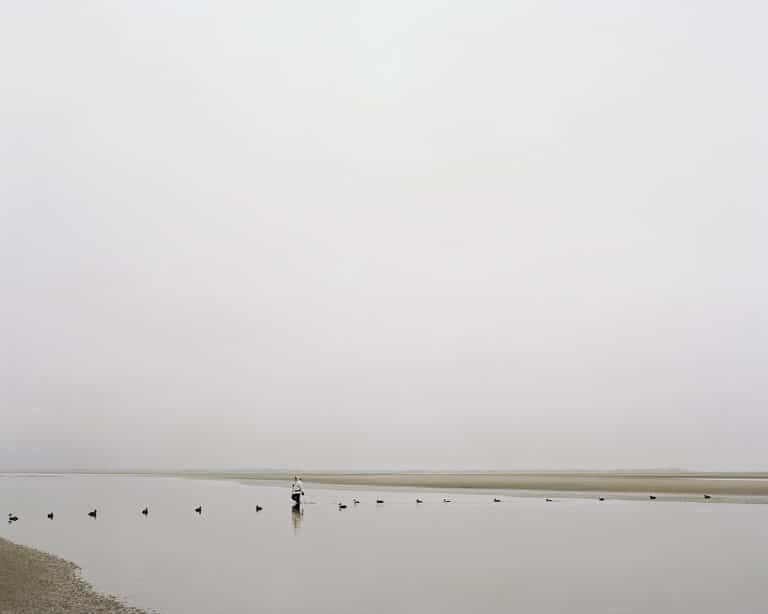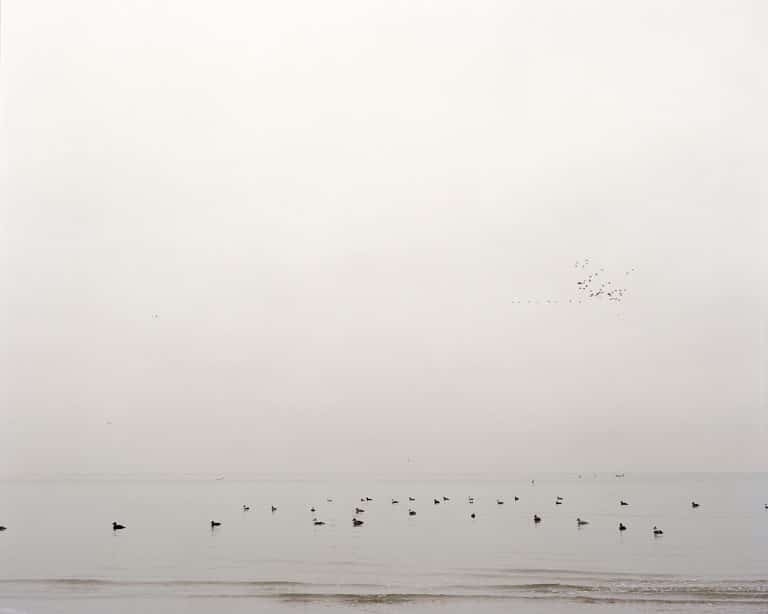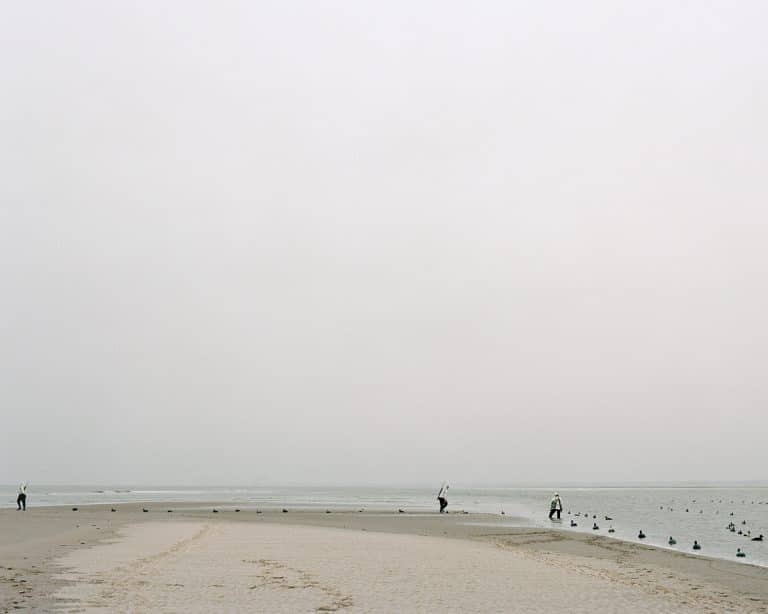Lang Jord
- copyright — @ Nicolai Howalt
- year — 2009
- edition — 5 + 2 AP
- size — 63 x 80 cm / 120 x 150 cm / 160 x 200 cm
- material — Digital C-print
In How to Hunt Trine Soendergaard & Nicolai Howalt use the modern hunt to explore the relationship between humans and nature.
Hunting today can be seen as a ritualized performance of something that was once a basic human need. Hunting is a classical theme of art history, from cave paintings to the Renaissance. Striving to locate this historical theme in a modern context, where it can be seen as a symbol of ‘the good life’ and the longing for some kind of authentic relationship to nature.
Just as modern society chooses to elide the actual reality of slaughter, so are the images an aestheticised rendition of the hunt, reflecting its recreative rather than essential nature.
There’s no blood, no guts – the kill itself is not in focus.
Working digitally with the imagry, Søndergaard and Howalt construct a reality, just as the apparently natural landscape is tamed, with reserves in a pre-mapped hunting ground and cabbage patches to feed the apparently ‘wild’ hunted. The images reflect a ‘manmade’ landscape, just as the hunt itself is carefully and predictably planned in advance. This repetitive, ritualized quality is something Søndergaard and Howalt choose to explore and reflect both methodically and visually.
Working digitally with the imagry, Søndergaard and Howalt construct a reality, just as the apparently natural landscape is tamed, with reserves in a pre-mapped hunting ground and cabbage patches to feed the apparently ‘wild’ hunted. The images reflect a ‘manmade’ landscape, just as the hunt itself is carefully and predictably planned in advance. This repetitive, ritualized quality is something Søndergaard and Howalt choose to explore and reflect both methodically and visually.
